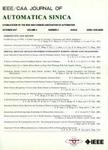Risk-Informed Model-Free Safe Control of Linear Parameter-Varying Systems
作者机构:Department of Mechanical EngineeringMichigan State UniversityEast LansingMI 48863 USA
出 版 物:《IEEE/CAA Journal of Automatica Sinica》 (自动化学报(英文版))
年 卷 期:2024年第11卷第9期
页 面:1918-1932页
核心收录:
学科分类:07[理学] 0701[理学-数学] 070101[理学-基础数学]
基 金:supported in part by the Department of Navy award (N00014-22-1-2159) the National Science Foundation under award (ECCS-2227311)
主 题:Data-driven control linear parameter-varying systems probabilistic control safe control
摘 要:This paper presents a risk-informed data-driven safe control design approach for a class of stochastic uncertain nonlinear discrete-time *** nonlinear system is modeled using linear parameter-varying(LPV)systems.A model-based probabilistic safe controller is first designed to guarantee probabilisticλ-contractivity(i.e.,stability and invariance)of the LPV system with respect to a given polyhedral safe *** obviate the requirement of knowing the LPV system model and to bypass identifying its open-loop model,its closed-loop data-based representation is provided in terms of state and scheduling data as well as a decision *** is shown that the variance of the closedloop system,as well as the probability of safety satisfaction,depends on the decision variable and the noise covariance.A minimum-variance direct data-driven gain-scheduling safe control design approach is presented next by designing the decision variable such that all possible closed-loop system realizations satisfy safety with the highest confidence *** minimum-variance approach is a control-oriented learning method since it minimizes the variance of the state of the closed-loop system with respect to the safe set,and thus minimizes the risk of safety *** the certainty-equivalent approach that results in a risk-neutral control design,the minimum-variance method leads to a risk-averse control *** is shown that the presented direct risk-averse learning approach requires weaker data richness conditions than existing indirect learning methods based on system identification and can lead to a lower risk of safety *** simulation examples along with an experimental validation on an autonomous vehicle are provided to show the effectiveness of the presented approach.



